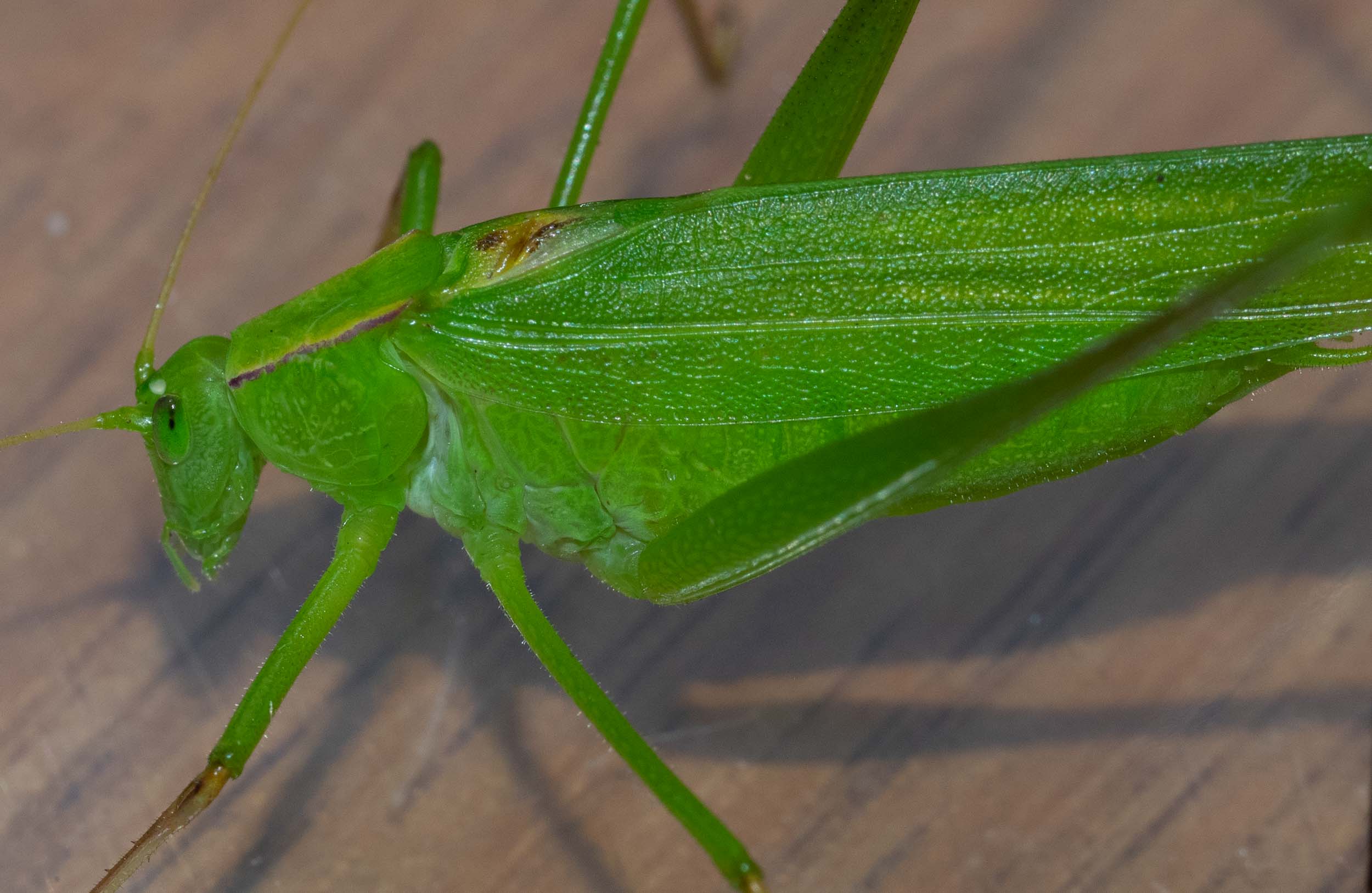Polichne, Phaneropterinae

Workbook
Characters of subfamily Phanteropterinae
from Rentz A Guide to the Katydids of Australia p.162
head rounded, not usually slanted or frontally flattened
fore tibia in section square, especially apically
pro sternum unarmed
ovipositor variable in size and shape but usually sickle-like
Genus Polichne
from Brunner von Wattenwyl 1878. p.99
eyes oblong or rounded
deflexed lobes of pronotum as long as wide or longer than wide (aeque altis ac longis vel longioribus quam altioribus)
From Tepper, JG (1891-2) The Phaneropteridae of Australia and Polynesia. Trans. Royal Soc. South Australia. v.15.
24/1/19
frons prominent, elongate
eyes very oblong
elytra linear, narrowed
deflexed lobes of pronotum longer than wide, with the hind margin much rounded
24/1/19
hind margin of meso and metasternum truncate
24/1/19
base of hind femora not dilated, whole unarmed
from Rentz A Guide to the Katydids of Australia
slender appearance
lateral lobes of pronotum usually longer than deep
narrow tegmina
short bud-like ovipositor
Polichne parvicauda
from Brunner von Wattenwyl 1878. p.99
deflexed lobes of pronotum longer than wide, with rounded postero-ventral margin
hind femora unarmed below.
oblong eyes
elytra of the male campo tympanali modice producto
pronotum lobis deflexis angulo obtuso insertis, longioribus quam altioribus, margine inferiore rotundato.
narrow tegmina
male campo tympanali sinistra parum producto
fore femora with three spines on the anterior ventral margin
mid femora with a single ventral spine
hind femora unarmed ventrally
Brunner von Wattenwyl 1878 fig. 59 Polichne parvicauda
From Tepper, JG (1891-2) The Phaneropteridae of Australia and Polynesia. Trans. Royal Soc. South Australia. v.15.
pale-green or testaceous (dull, brick-red colour)
24/1/19 male. see image of type specimen (link below) for female.
frons white
ridges of pronotum reddish
length of body male 15mm female 18mm
length of pronotum male and female 4mm
length of elytra male 29mm female 30mm
width of elytra male and female 4mm
length of hind femora male 20mm female 22mm
length of ovipositor 3mm
varies considerably in colour from bright green to pale testaceous, apparently due to its surroundings or food taken
dark brown or purplish bordering of pronotum is constant
from Rentz A Guide to the Katydids of Australia
body form is grass-like
two colour morphs, brown and green, present in equal numbers
photo on p.169 shows dots on anterior side of tegmina and brown tibiae on all legs
This is a workbook page … a part of our website where we record the observations and references used in making species identifications. The notes will not necessarily be complete. They are a record for our own use, but we are happy to share this information with others.



















